Washington DC is now so crime-ravaged locals are driving tiny distances instead of walking and are too scared to go out during the day, as woke city sees homicides spike by 29% in a YEAR
Rising crime in the country’s capital has residents in turmoil, with locals traveling short distances to avoid walking and others now too scared to go out even during the day.
Murders and robberies are up 29 and 67 percent from the same period last year, with the homicide rate approaching levels not seen in two decades – while other major cities such as New York, Chicago, Philadelphia and Baltimore see a decline.
Neighboring Baltimore could end the year with fewer than 300 homicides for the first time since the riots over the death of Freddie Gray in police custody in 2015.
Yet a 58-year-old lobbyist in Washington DC said The Washington Post that he stopped walking in his neighborhood after he and his husband were attacked near Dupont Circle, and then had a bottle thrown at them outside Whole Foods. He and his husband left town last month after 30 years and moved to Maryland.
“I always thought in the past that I could outrun any criminal,” he said. ‘I can not anymore. I’m a sitting duck.’
A body is covered in a tarp after a shooting in Washington DC in April. Murder rates are on track to reach levels not seen in two decades

Nora Fanfalone, 28, avoids using the main entrance to her apartment building after several unpleasant and threatening encounters
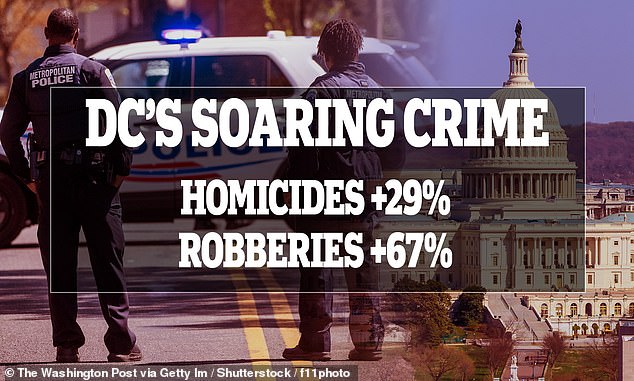
Nora Fanfalone, 28, a management consultant, said she now uses the service entrance of her downtown apartment building to avoid being pushed by an aggressive man again or witnessing a gunfight on her doorstep, as happened recently.
“I’m thinking, ‘How did I misunderstand this?’ “I live across the street from the Smithsonian and there’s an Hermès store two blocks away,” she said the newspaper.
“It’s very surprising that public safety is an issue in a neighborhood with so much traffic and major attractions.”
Ronald Moten, 53, who lives in the Hillcrest neighborhood of Ward 7, said he now avoids going to the gas station at night for fear of being robbed.
He was arrested in the 1990s for selling crack, but now works with young people to keep them off the streets.
He told the newspaper that the crime at the time was targeted and local, but that the violence was now happening across the city.
‘It used to be that you didn’t have to worry about crime unless you were associated with the streets, with the drug trade. Now you could just go out into the street, go to the car and you could be killed,” he said.
Moten said he arrived at a nightclub on Connecticut Avenue — one of the diagonal avenues radiating from the White House — this summer just as three men in hoodies were trying to rob someone.
“A gun went off and I had to dive to the ground,” he said.
‘People don’t care. They rob them at Georgetown and Connecticut avenues. They go to the dock. Now it could be anywhere.”
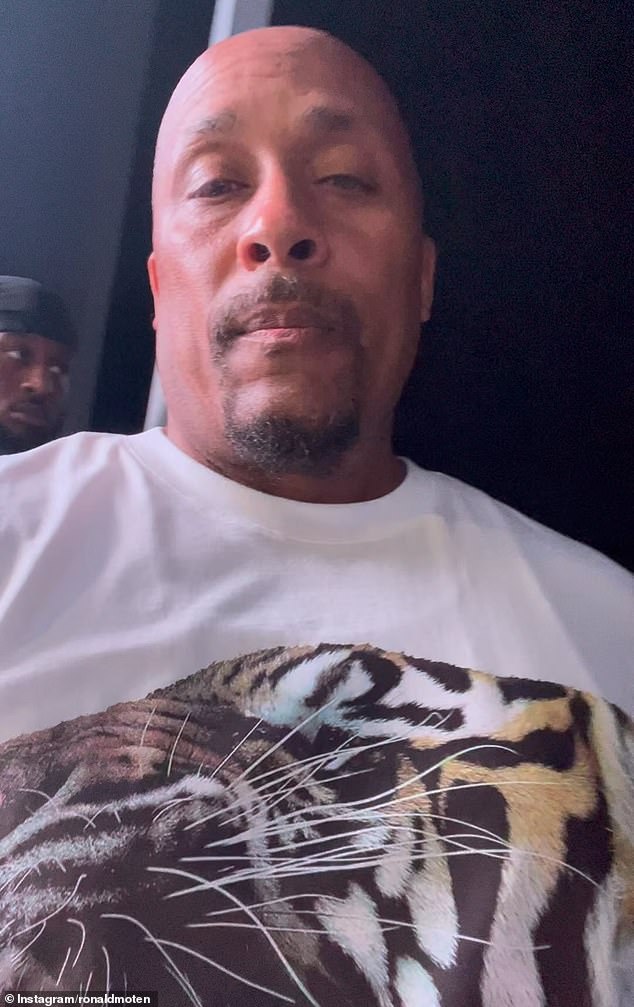
Ronald Moten, 53, said DC violence in the 1990s was localized: now it’s citywide

Stephanie Heishman, 44, said she felt “ridiculous” as she drove five blocks after her usual Sunday night dinner at a friend’s house, but she didn’t want to get involved in the violence in her Adams Morgan neighborhood.
Stephanie Heishman, 44, an event planner in Northwest Washington, said she now drives five blocks away for her usual Sunday night dinner with a friend, after a shootout outside her Adams Morgan apartment last year and the killings of three men in her neighborhood. last month.
“It’s so ridiculous,” she said of driving. “On the other hand, I don’t want to just get shot.”
The causes of DC’s crime wave are difficult to pinpoint.
Some point out that while D.C. has its own police department, federal authorities are responsible for the rest of the criminal justice system, including prosecutors, courts, prisons, and supervision of offenders.
Washington DC Mayor Muriel Bowser has resisted calls to defund the police and aims to increase the size of the police force from the current 3,580 to 4,000.
Her 2024 budget, which was approved by the DC Council in May, includes $5.4 million in bonuses for new hires.
Her 2023 budget earmarked $1.7 billion of the $19.5 billion for public safety and justice — an increase from $1.5 billion the year before.
“We must use all resources to reduce crime,” she wrote.
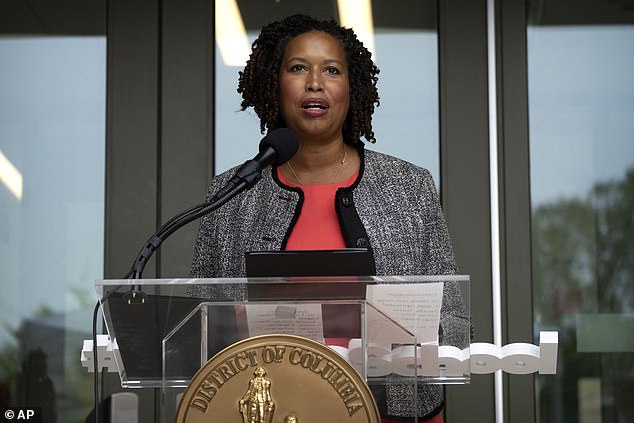
D.C. Mayor Muriel Bowser has resisted calls to defund the police and is seeking to expand the size of the force to 4,000, up from the current 3,580.
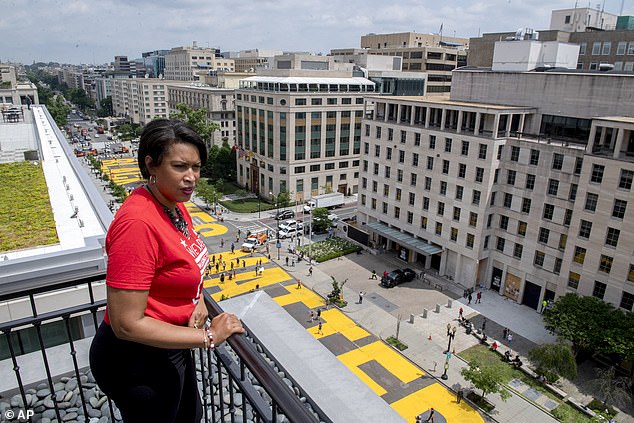
Bowser has been criticized by some for spending $4.8 million on BLM Plaza
In the wake of the killing of George Floyd, while some cities caved to calls to defund the police, Bowser moved in the opposite direction, choosing to increase dollars for police in her fiscal year 2021 budget – which came into effect in October 2020.
However, the D.C. Council revised the mayor’s proposal by cutting the Metropolitan Police Department’s budget by $32 million (or 5.4 percent) and diverting $9.6 million from the police department to disrupting violence .
However, Bowser was criticized by some for spending $4.8 million to create BLM Plaza in the heart of downtown DC, where the slogan was painted on the road just steps from the White House, which was then inhabited by Donald Trump.
Murders have risen in four of the past five years: 2021’s murder count was the highest since 2003 at 227, although that fell to 203 last year.
There have been 190 homicides so far this year, putting D.C. on pace to overtake 2021 as the bloodiest year in two decades.
The most recent victim was 17-year-old Antonio Cunningham, who was shot and killed Monday on his way to his part-time job at a deli in Northeast Washington.
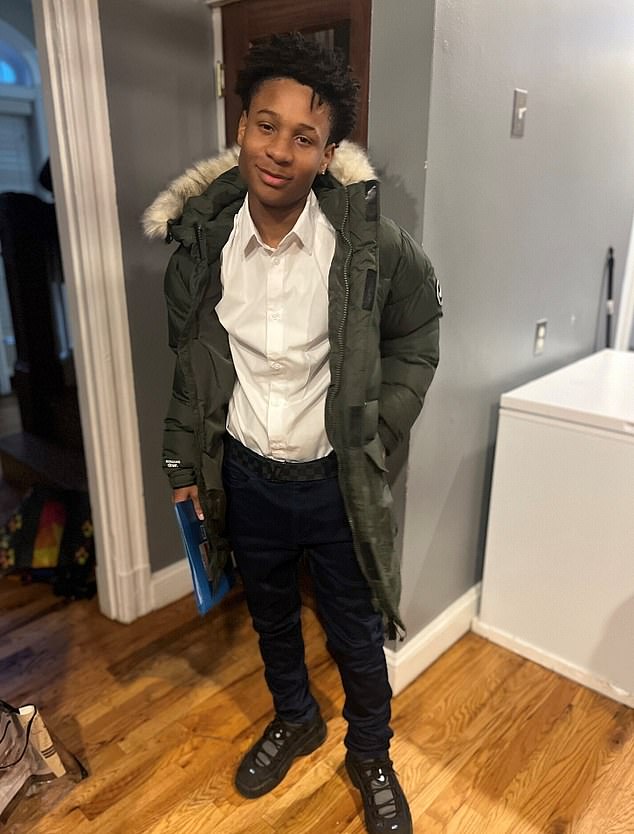
Antonio Cunningham, 17, was killed Monday when he went to work at a deli in Northeast DC
D.C. police said Cunningham was accosted by three masked assailants, and Cunningham’s family said they robbed him.
Kenya Darby, 33, who is engaged to Cunningham’s father and lives with the family, said Cunningham was a loving older brother to five younger siblings, and was devoted to schoolwork and his local boxing gym.
She said he talked about starting his own business, and that he was hardworking and driven.
Darby said she and her fiancé were stern about his whereabouts, warning him to be careful and keep his head down.
“We’re always trying to make sure he’s doing the right thing and making sure he was where he needed to be,” she said The Washington Post.
Some teens stayed home out of fear of violence or that of their parents, said Derek Floyd, who coaches youth at the Barry Farm Recreation Center in Ward 8.
He told the newspaper he can’t find any 14-year-olds to play fall football this year.
“It makes it more dangerous,” Floyd said. “Unfortunately, this is our reality.”
